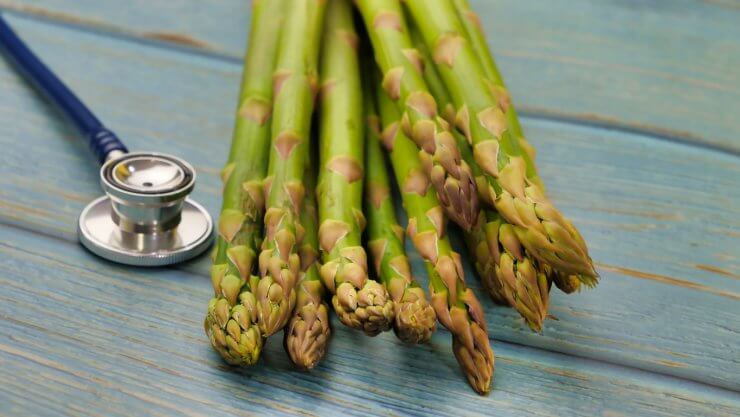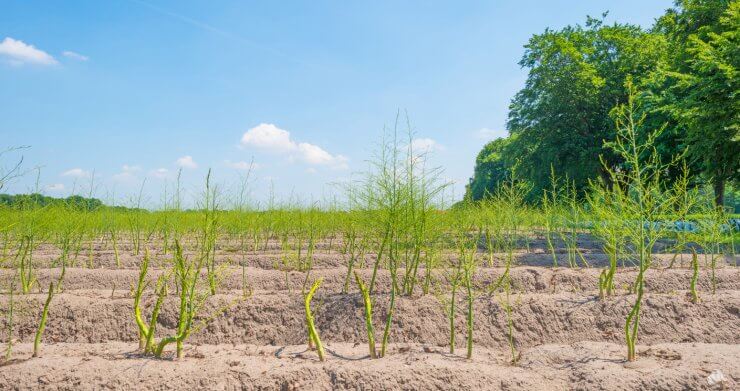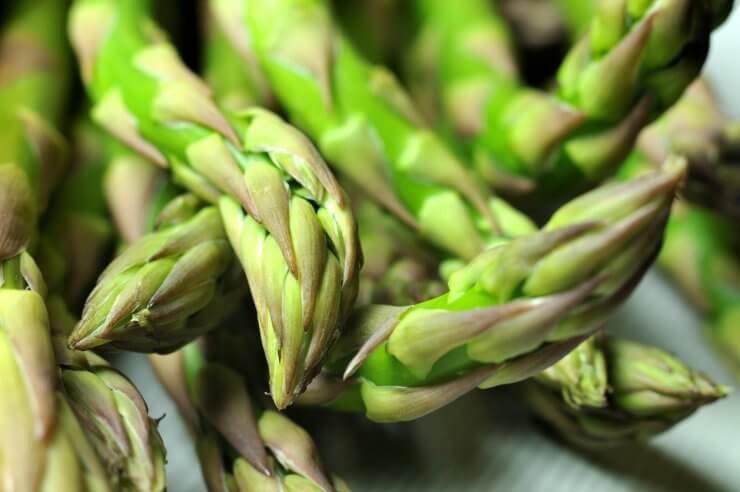
Prevention is the best medicine for stopping diseases from infecting your asparagus
Asparagus plant diseases are caused by bacteria, fungi, and viruses. The diseases can spread through the soil, water, air, infected tools, animals, and even gardeners themselves.
Spot diseases on your asparagus plants sooner so you can treat plants before they are destroyed by disease and can successfully manage symptoms. Here is a three-step approach to keeping vigilant about the presence of asparagus plant diseases:
- Research the Risks. Find out about asparagus diseases that are prevalent in your geographic area. When possible, buy disease-resistant asparagus plant varieties to avoid diseases in the first place—many hybrid asparagus varieties have been specifically designed to resist certain diseases.
- Examine Plants Daily. Check your asparagus plants every day to be sure no disease symptoms are present or emerging.
- Spot Diseases Early. Catch and treat disease quickly so your plants can recover and thrive.
Preventive measures to avoid asparagus plant diseases
Try some of these techniques for avoiding asparagus diseases in the first place:
Choose planting location carefully
Avoid planting asparagus where you have previously planted crops that are susceptible to the same diseases, such as potatoes, onions, and legumes. Many bacteria, fungi, and viruses live in the soil for years, just waiting to prey on your asparagus plants!
Avoid planting the same crops nearby, as having them in the area could facilitate rapid spread of any developing disease.
Improve your soil composition

Asparagus growing in healthy soil
Before planting your asparagus, add a good amount of compost or organic matter to improve the soil. Extra nutrients and good aeration help grow stronger plants that will resist disease and infection.
Plant disease-resistant asparagus varieties
Many hybrid asparagus varieties have been developed specifically to resist particular asparagus diseases. You can plant disease-resistant asparagus varieties to always have the healthiest plants and harvest.
Water your garden properly
Don’t underwater or overwater your asparagus plants. By keeping a regular watering schedule, you’ll keep your plants vibrant and healthy. Overwatering and watering directly on the plants—instead of the preferred watering method, directly at the stem on the soil—leads to consistently wet conditions, which allows bacteria, fungi, and viruses to thrive and multiply.
Destroy infected plants
Throw away or burn infected plants. Don’t keep infected plants over the winter in your garden, and don’t throw them on your compost pile. Disease-ridden plants, even when dead, will spread the disease to other plants or even your soil.
Apply an organic fungicide preventatively
We’re believers in not using toxic materials in the garden—they can hurt the plants, hurt the soil, damage the environment, and harm you.
Make your own natural disease and pest control spray with benign materials. Mix one tablespoon of baking soda, 1/2 teaspoon of a mild dish detergent, and 2 1/2 tablespoons of olive oil in a gallon of water to make a solution that will repel all kinds of bugs, as well as a fungicide for blight and mildew on the asparagus plant leaves. Shake it well in your bottle before spraying and repeat every week for it to be continuously effective.
How to Identify, Treat, and Prevent Asparagus Plant Diseases

Fresh and healthy asparagus
Asparagus diseases can affect the foliage, stems, and crowns. Common diseases that affect asparagus include fusarium rot, phytophthora rot, asparagus rust, and purple spot.
Phytophthora and Fusarium Rot
Phytophthora root rot in asparagus is caused by a species of fungi of the genus phytophthora. It and fusarium rot (an extremely long-lived soil-borne fungi) are common problems associated with growing asparagus, especially in areas with poor soil drainage. Infected plants become weak and stunted and eventually collapse and die.
The affected asparagus plant will look sparse and weak. Apparently healthy canes will suddenly decline and collapse; leaves will turn yellow or orange. Typically, asparagus plants suffer from root rot because the fungi were already existing in the planting spot, or because of a lack of proper drainage.
Root rot is not so much cured as managed. The best way to minimize risk is by taking some or all of the following steps:
- Select healthy crowns for planting. Avoid those that appear water-soaked or gray.
- Select a planting site with adequate drainage, amend the soil to provide drainage, or plant in raised beds. Then be careful not to overwater your asparagus plants.
- Choose resistant varieties. Many asparagus cultivars have been engineered to resist root rot to varying degrees.
Asparagus Rust
Asparagus rust is a fungal disease that’s easily detected by its rusty, orange color. The spots appear first on the bushy green heads of the plant and spread to the roots and crown, weakening the plant and leading to smaller, fewer spears.
Wind and rain spread the spores that appear on the feather plant tops in summer. As soon as you see asparagus rust, cut and remove the affected areas and burn or safely dispose of the debris. After harvesting the spears, spray the remaining stems and foliage with fungicide formulated for asparagus rust, repeating every seven to 10 days.
You can lessen the chance of asparagus rust by spacing your plants to give them plenty of air circulation, avoiding overwatering or underwatering, and planting resistant varieties such as Jersey Giant.
Purple Spot
Purple asparagus is a beautiful asset to your garden—purple spot is not. Just like its name indicates, purple spot appears as purple spots or lesions (often with a brown or tan center) on the leaves and stems of the asparagus plant. Caused by the fungus Stemphylium vesicarium purple spot can severely damage your plants. Remove the affected areas, burn or safely destroy the debris, and spray with a food-safe fungicide made for purple spot.
Have you had problems with diseases attacking your asparagus plants? What types of problems do you regularly face with your asparagus plant? Please tell us how you treat and prevent diseases from destroying your asparagus crop.


 Previous
Previous

